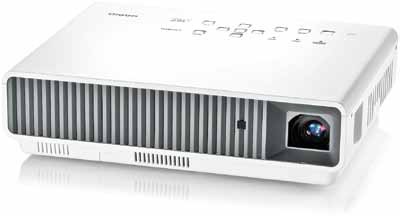How to Determine TCO for Classroom Projectors

Today, educators are confronted with a variety of obstacles, including budget cuts, limited resources, and the elimination of educational programs. According to a study conducted by PBS and VeraQuest Inc. in 2013, more than two thirds of teachers nationwide express a desire for more classroom technology. While this stresses the importance of technology in the classroom, this is unfortunately one of the first line items to go when budget cuts begin. The future looks dismal too; according to the 7th Annual “Kids Share” report by The Urban Institute, federal spending for education programs is projected to drop by 37 percent, relative to the size of the economy.
So how do educators choose viable technologies to integrate into the classroom that are not only engaging, but also portable, easy-to-use and, most importantly, cost-effective? With limited budgets choosing the best technology with the lowest total cost of ownership (TCO) is paramount.
When determining TCO, there are several factors to keep in mind—how long will the product last before it needs to be replaced; what is the cost to operate it on a daily basis; does it require regular maintenance; are replacement parts available for a reasonable cost. Consider all of these factors relative to the purchase price and the features and functionality it offers, and you will have a better picture of whether it is a good long-term investment.
One of the most common technologies used in the classroom is a projector. In classrooms of today, students no longer have to crowd around television or computer screens to view presentations. Projectors are now the centerpiece of classroom technology hubs that not only engage students on a deeper level but add impact to each lecture and lesson. The majority of educators use projectors for presentation purposes including disseminating information and showcasing visual aids. Classroom projectors are typically short throw and ceiling mounted so educators do not cast shadows on the board. It is very important, especially for schools that utilize projectors across a district, to choose one with the best TCO.
Lamp-free projectors tend to offer a better TCO than lamp-based projectors because they are more durable, last longer, and need less high-cost maintenance. Depending on the model and manufacturer, lamp-free projectors will also provide richer colors that essentially bring images to life.
A lamp-free projector from Casio Maintenance
Projectors are expensive pieces of equipment, which if not properly taken care of will reduce its lifespan. Performing regular maintenance ensures the various parts of the projector such as filters, lens and lamps, are running efficiently and correctly. For instance, as lamps get older they begin to fade, resulting in poor picture quality. Filters also need to be changed on a regular basis (every 200-500 hours of use) to prevent overheating and projector malfunction.
A daily selection of features, industry news, and analysis for tech managers. Sign up below.
Depending on usage, a projector lamp could burn out every year, and with lamp prices as high as $500 each, it can get become quite expensive over time. Lamp-free projectors eliminate the costs associated with lamps because they have a lifespan of 20,000 hours and ultimately reduce down time for maintenance ensuring educators get the most out of the school day.
Conservation
Environmental consciousness is another significant factor that comes into play for educators when seeking new classroom projectors. According to the Environment Protection Agency, each year an estimated 600 million florescent lamps are disposed of in United States landfills amounting to 30,000 pounds of mercury waste.
Lamp-free projectors are mercury-free, which eliminates concerns for the proper disposal of used lamps and mercury pollution. In addition, educators can avoid mercury contamination caused by broken mercury lamps ensuring classrooms, and work environments, are safer too.
Matt Mustachio is the general manager of Casio’s Business Projector Division.
